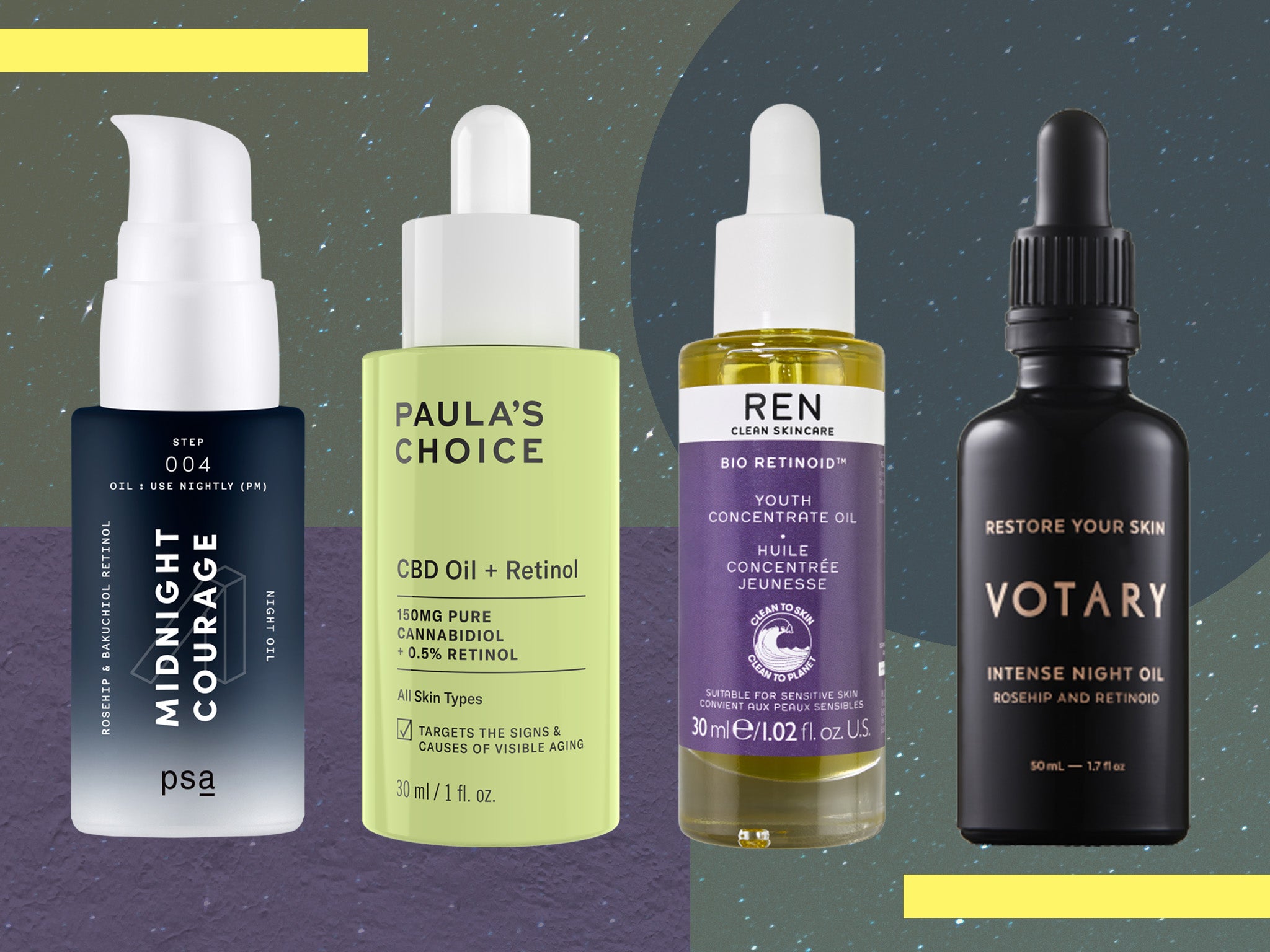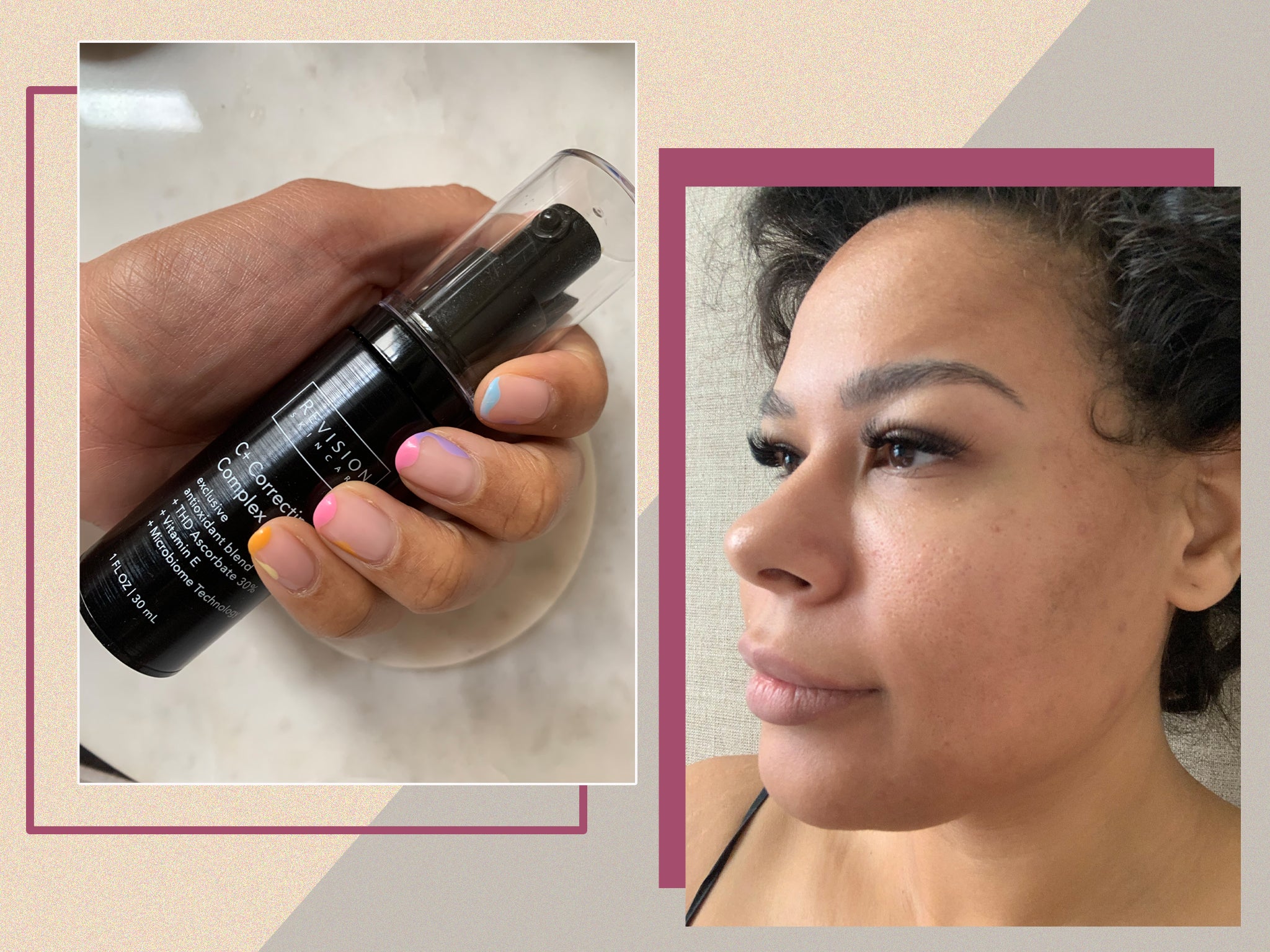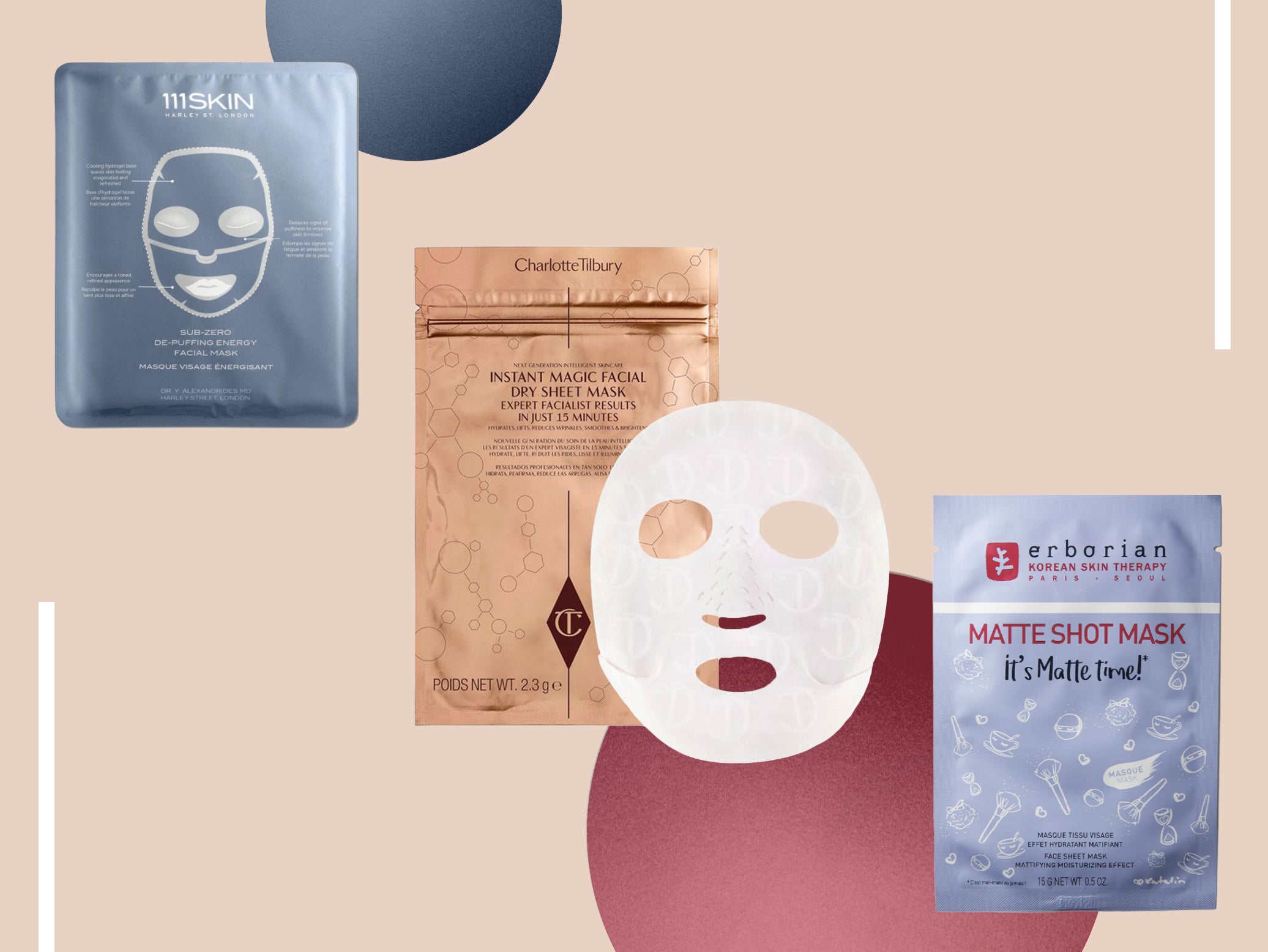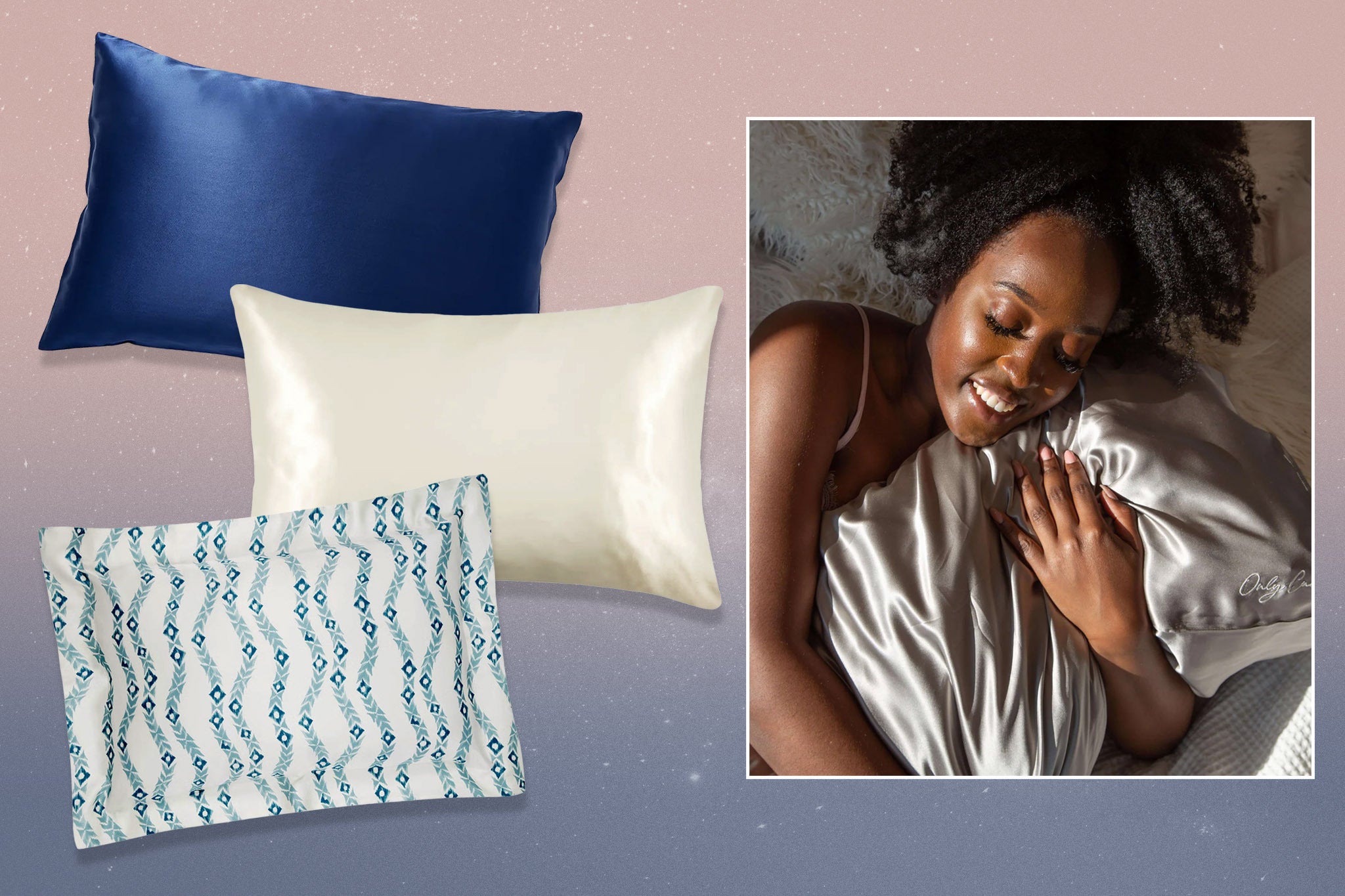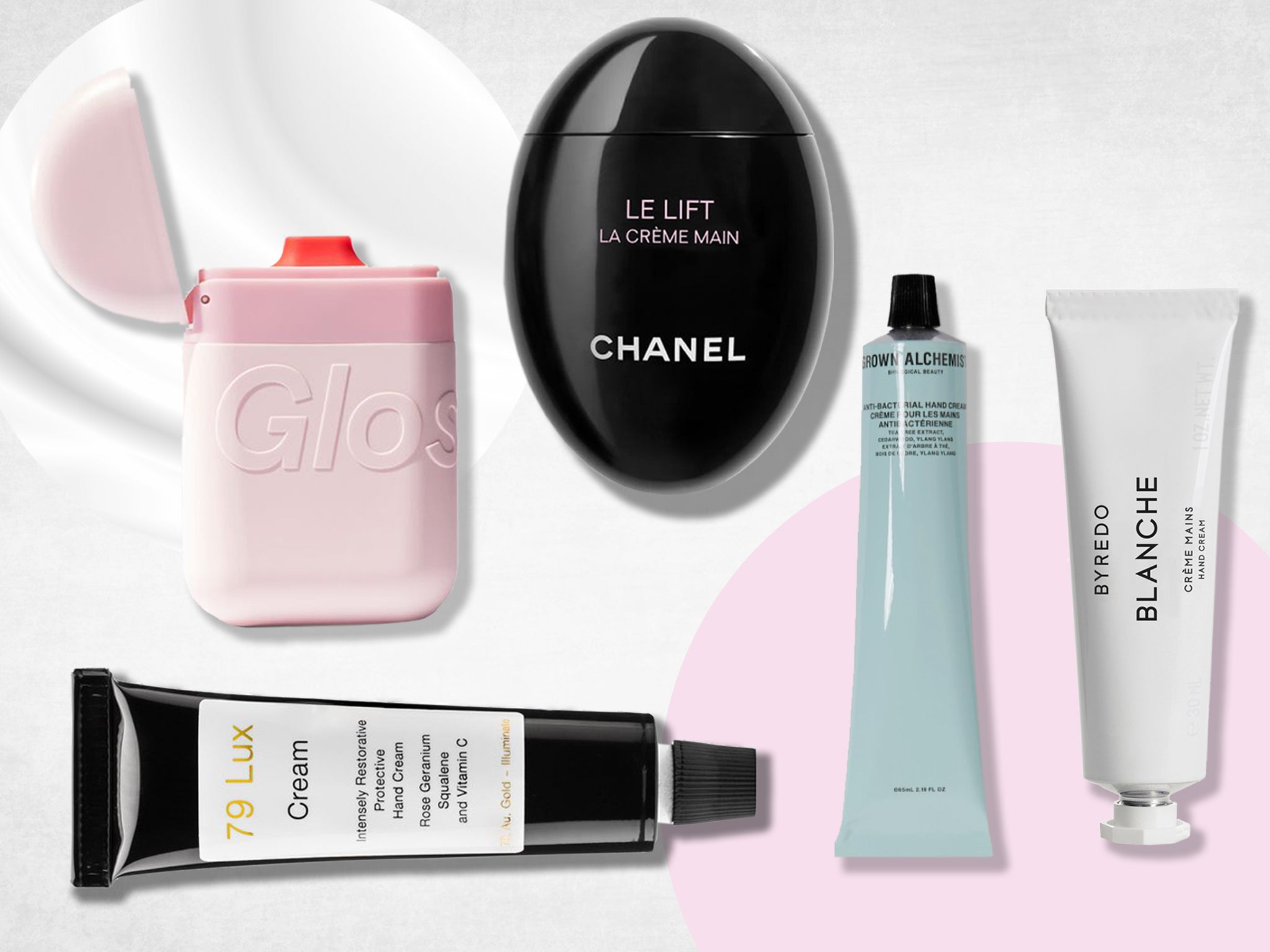The Independent's journalism is supported by our readers. When you purchase through links on our site, we may earn commission. Why trust us?
10 best eczema creams that will soothe and hydrate your skin
Dealing with dry and cracked skin can be a pain, literally, but we've rounded up the products that really help
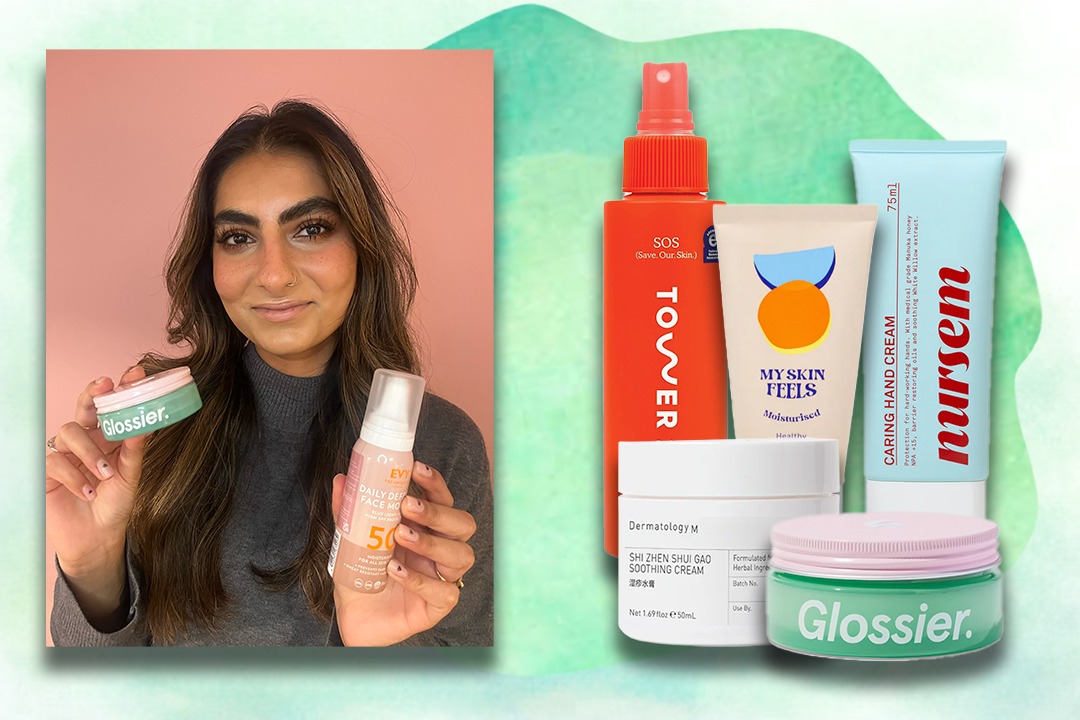
The term “eczema” refers to a group of chronic inflammatory skin conditions that cause areas to become sore, itchy, dry and cracked. While some lotions and potions might calm your flare-ups, sufferers are likely to see a recurrence in their lifetime, as, much like acne, eczema can’t be cured, only managed.
The internet is awash with conflicting advice on how best to manage symptoms, leaving eczema sufferers with plenty of unanswered questions. Whether it’s understanding what formulas can be used alongside prescription steroids; the ingredients to look out for; and whether external factors, such as diet and stress impact eczema, it can be very confusing when it comes to finding the right treatment.
To help answer some of these questions, we consulted the experts. In terms of what causes a flare-up, Antonia Philp, NHS nurse and co-founder of Nursem says: “External factors, such as using harsh soaps, detergents and cleansers can play a part, as well as environmental factors, including very crisp, cold weather and even pet fur”. She adds that stress is also another key factor behind eczema flare-ups, “as the body produces more cortisol and adrenaline”.
But how should you treat it? Well, Dr Gaby Prinsloo, medical director at IIAA, stresses that the mainstay of topical treatment is adequate moisturising. She recommends applying emollient “as soon as possible after bathing or showering, while the skin is still wet, to lock in moisture”, adding that “mild and moderate eczema can be treated without steroid creams, but this requires discipline”.
In terms of the ingredients to look out for, GP and dermatologist Dr Sonia Khorana recommends things like colloidal oatmeal, shea butter, glycerin, hyaluronic acid, petrolatum, niacinamide, ceramides and coconut oil. She adds that you should be mindful of fragrances, essential oils, lanolin, drying alcohols, and that “you might need to take it easy with retinoids and alpha hydroxy acids”, as overdoing these can “wreck your skin barrier”.
With all this in mind, I’ve found the best eczema creams that, with frequent use, have helped me manage our eczema.
How we tested the best eczema creams
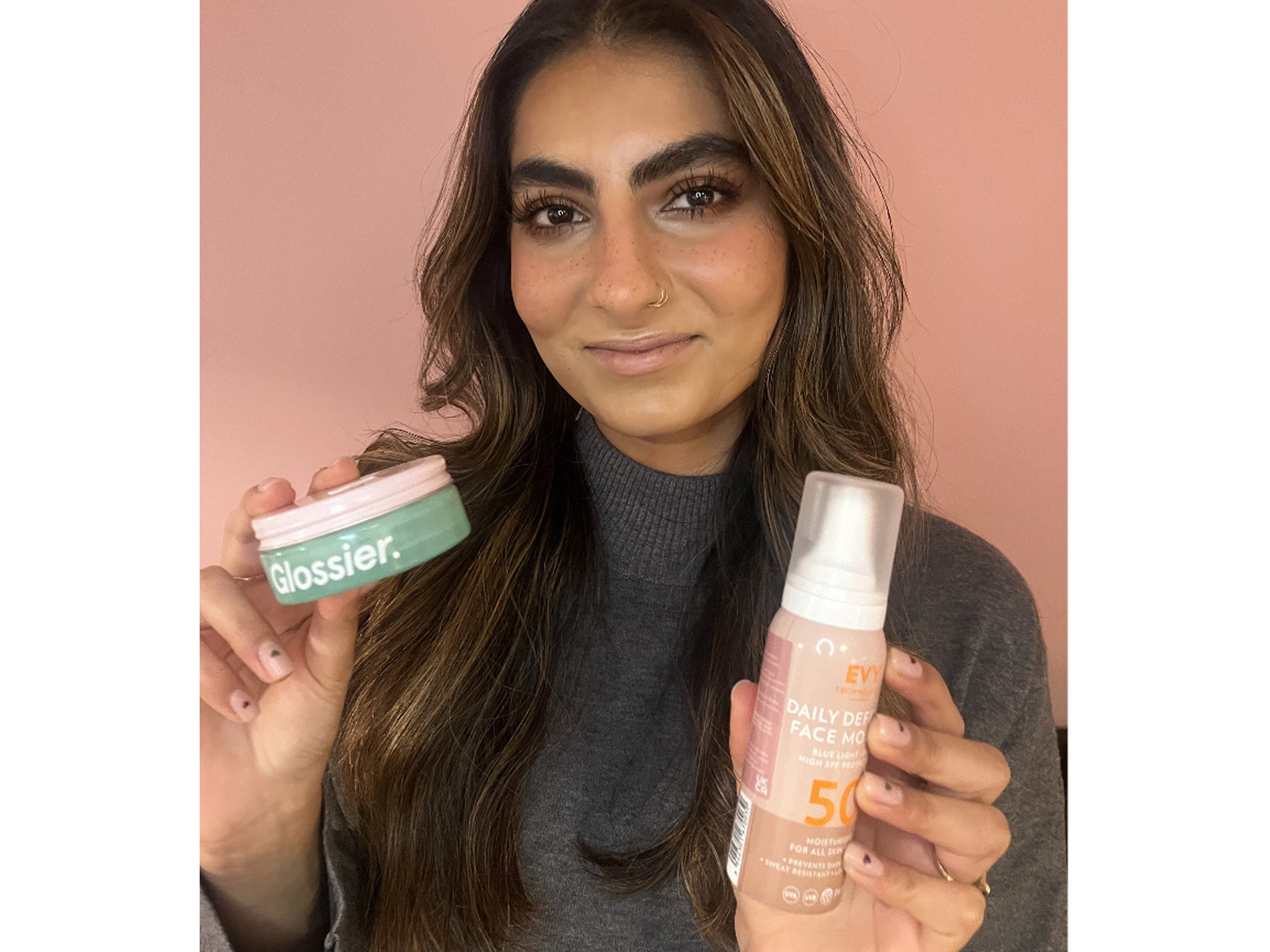
I’d argue that I’ve been testing and prepping for this article for my entire 26 years. My eczema comes and goes in a vicious cycle – rearing its ugly head on my hands, the insides of my arms, the front and back of my neck, around my eyes, on my cheeks, on my shins and more. I mostly have it under control (though I do have remnant scars), save for on my hands, which still struggle thanks to my love affair with hand sanitiser.
I considered a number of factors before choosing the final edit of products featured here, including expert advice, popularity, what worked best for me personally, packaging, price point, ease of application, feel on the skin and final result.
For context, I have medium-light brown skin. I get the odd eczema flare-up on my face and body, and I have acne too. I don’t have many wrinkles yet, but I have fillers in my under-eyes, nose and lips. Each product below is something I personally love, use and recommend.
The best eczema creams are:
- Best eczema cream overall – Dermatology M eczema cream: £42, Dermatology-M.com
- Best budget eczema cream – Aveeno dermexa emollient cream: £16.80, Boots.com
- Best eczema cream for the face – Glossier after baume: £30, Uk.glossier.com
- Best eczema cream for the hands – Nursem hand care full range: £47.99, Nursem.co.uk
- Best eczema cream for redness – Rosalique 3-in-1 anti-redness miracle formula SPF50: £32.24, Amazon.co.uk
1Dermatology M eczema cream

- Best Eczema cream overall
- Size 50ml
- National Eczema Association Seal of Acceptance No
- Why we love it
- Suitable for the hands, face and body
- Take note
- Pricey
Formulated especially for those who suffer from atopic eczema, Dermatology M combines the power of Chinese medicine with science to treat skin without steroids. The founder, Dr Mazin, strongly believes that you can manage eczema on a long-term basis without any steroids at all. This is because steroid use is a palliative treatment, not a curative one, though you should always check in with your individual doctor or dermatologist.
The eczema cream stars a popular traditional Chinese medicine ingredient called qing dai to soothe dryness and itching. You might also see this written as 青黛 or indigo naturalis.
The cream’s texture is deliciously silky, so I use it on my hands and carry on with my day as normal, without covering everything in grease. I also like that it’s a multitasker – there’s nothing worse than travelling and having to pack five different creams just to keep your eczema under control. This can be used for your hands, face and body – just slather it on wherever you want, let it absorb and voila. Instant itch-ease, no steroids required.
2Aveeno dermexa daily emollient cream

- Best Budget eczema cream
- Size 500ml
- National Eczema Association Seal of Acceptance Yes
- Why we love it
- Recommended by doctors and easy to find
- Take note
- Big, chunky bottle may not appeal to everyone
I would be lost without this Aveeno cream. In fact, my doctor prescribes this to me each month – though it’s available online and over the counter too – and it actually manages to make the thought of heading to a chemist fill me with excitement. That’s how good it is. I always have a bottle handy on my desk to keep my hands nourished throughout the day; I feel like I can’t type unless I’ve applied this first. The cream comes in a huge bottle with a pump, making it super easy to slather onto larger areas of skin too – ideal post-shower.
Oats act as anti-inflammatories when applied topically, and this unscented formula uses oats in a three-pronged approach: oat extract soothes and hydrates; oat oil helps retain moisture via skin-identical fatty acids and ceramides; and oat flour offers itch relief and hydrates. It also calls on ceramides to repair and strengthen the skin barrier by forming a protective layer that helps to lock in moisture. If you’re unsure of what to spend your hard-earned pennies on, this formula is a solid choice that’s easy to find and won’t let you down.
3Glossier after baume

- Best Eczema cream for the face
- Size 50ml
- National Eczema Association Seal of Acceptance Yes
- Why we love it
- Beautiful packaging
- Vegan and cruelty free
- Suitable for blemish-prone skin
- Take note
- A little heavy for daytime
Imagine your skin being enveloped by a cloud. Well, that’s what using Glossier’s after baume feels like. I genuinely look forward to applying this every single day. Glossier’s meteoric rise to Instagram domination needs no introduction, and – in an ever-changing social landscape (here’s looking at you, TikTok) – newer additions to the brand’s arsenal have kept it at the forefront of the beauty sphere.
The consistency of this product feels a bit like a cold cream, and the delicious millennial pink and minty green jar all add to the experience and allure. I like to use this nightly after my acne treatments to instantly soothe inflammation and lock in moisture. It’s ideal for sensitive skin, and it’s non-comedogenic, so it’s perfect for blemish-prone skin as well.
It’s rich in buttery, cushiony, plant-based ingredients, such as glycerin, cupuaçu butter, babassu oil, linoleic acid and green microalgae extract, which all work to retain moisture, feed the skin with antioxidants, and re-balance the skin’s microbiome. The final cocktail instantly absorbs and never feels greasy – an elite combo.
4Nursem hand care full range

- Best Eczema cream for hands
- Size 300ml, 300ml, 75ml, 50ml
- National Eczema Association Seal of Acceptance No
- Why we love it
- Formulated by a nurse with first-hand experience of eczema
- Take note
- Soap contains essential oils
Searching for a hand cream that can soothe itchy and sore skin has been trial and error for me – but in 2021, I discovered Nursem and it’s been a mainstay in my bathroom.
This bundle is a one-stop shop for all hand-based eczema woes, featuring a soap, a standard and travel-sized hand cream, as well as a thicker cream for overnight use. The large soap and cream look incredibly chic sink-side (Aēsop who?) and make washing your hands during flare-ups so much less stressful. The ultra-gentle hand wash cleans just like regular soap, but the ingredients protect the skin barrier and lift microbes. It does contain fragrance in the form of essential oils though, and while I’ve found this to be a good hand wash for me, it might irritate some. On the other hand (if you’ll excuse the pun), the creams are completely fragrance-free and will soothe, condition and regenerate skin on sore, reactive hands.
5Rosalique 3-in-1 anti-redness miracle formula SPF50

- Best Eczema cream for redness
- Size 30ml
- National Eczema Association Seal of Acceptance No
- Why we love it
- Good at reducing redness
- Take note
- Might not work on deeper skin tones
I was so excited to try Dr.Jart+’s cicapair tiger grass colour correcting treatment when it went viral a few years back for neutralising redness and soothing skin, so imagine my disappointment when I couldn’t use it because I’m too...brown. As far as skin tones go, mine isn’t very deep at all. In fact, my e.l.f cosmetics foundation shade is “light 280”. Yet, Dr.Jart+’s green-hued cream appeared ashy on my skin.
Enter the Rosalique three-in-one anti-redness miracle formula SPF50. It’s fragrance-free and conceals redness with its green, colour-correcting hue while also soothing and hydrating skin with panthenol (also known as pro-vitamin B5), shea butter, urea and anti-inflammatory chamomile.
Although not made specifically for eczema sufferers (it’s made for those with rosacea or keratosis pilaris), I find this formula is great for soothing any post-flare-up redness, and it’s particularly handy for those days when my eczema is too severe for make-up. I love that it’s an SPF too, and it also plays well under foundation. It’s buildable and versatile, but I’m not sure how it would fare on darker skin tones.
6EVY Technology face daily defence mousse SPF50

- Best Eczema cream for everyday use
- Size 75ml
- National Eczema Association Seal of Acceptance No, but it is nominated by the Vitiligo Association
- Why we love it
- Suitable for all
- Offers environmental protection
- Take note
- Some might prefer a cream to a mousse
This mousse is a must-have for a multitude of reasons: it offers factor 50 sun protection for up to six hours; it doesn’t rub off when swimming, sweating or towel-drying; it protects skin from heat, wind and other environmental irritants; it’s hypoallergenic and gentle; it’s vegan; it’s suitable for around the eyes; it’s fragrance-free; it doesn’t clog pores; and it hydrates and brightens skin.
At this point, I feel like I should earn a commission – I’ve recommended this product to anyone who’ll listen, including my mum, who has a literal sun allergy. As well as doing all of the above, the impressive formula comes in a fun mousse form, which is easy to apply but also negates the need for preservatives and will last for ages, even after it’s been opened.
This is by far my favourite SPF on earth – it doesn’t aggravate my acne or eczema; it makes my skin feel hydrated and supple; and it’s a great make-up primer.
7bloome by Donna Marie the rejuvenating face cream

- Best Eczema cream containing retinol
- Size 50ml
- National Eczema Association Seal of Acceptance No
- Why we love it
- Rejuvenates skin without irritation
- Take note
- Expensive
Founded by two guys in East London, Arron and Carlton Sheekey, bloome by Donna Marie actually has a really touching backstory. It all began when their mum, Donna Marie, who was struggling with skin cancer. Donna’s treatments left her skin inflamed and sensitive, so her sons set out to create something to ease her pain. The rejuvenating face cream is the result, and it’s the only retinol I’ll ever let near my skin.
While you shouldn’t use retinol on an active eczema flare-up, I like to use this when I have my eczema under control. This isn’t specifically a retinol, per se, but more of a moisturiser that just so happens to have retinol in it and, when I asked the brand if I could use this on my eczema, the response was a resounding “Yes!”
The formula combines anti-inflammatory ingredients to nourish and hydrate skin while protecting it against environmental stressors and strengthening the skin barrier. It works to gently rejuvenate and contiains eczema heroes like plant-based glycerin, allantoin, oat silk, jojoba seed oil, hyaluronic acid and shea butter pepper but, the cannabidiol is the real star of the show.
Research on the use of CBD for eczema is still limited, but The National Eczema Association quotes Peter Lio, clinical assistant professor of dermatology and paediatrics at Northwestern University’s Feinberg School of Medicine, as saying: “CBD has anti-inflammatory, anti-itch and anti-pain properties that make it extremely attractive as a medicinal compound, particularly in dermatology”. He further explains: “Topical CBD is a very promising treatment for eczema… In the correct vehicle, it could also help heal the skin barrier”.
8My Skin Feels healthy hydrating moisturiser

- Best Eczema cream for the planet
- Size 50ml
- National Eczema Association Seal of Acceptance No
- Why we love it
- Reduces food waste
- Take note
- Contains essential oils
I was lucky enough to meet Danielle Close, the founder of My Skin Feels, by pure happenstance, and I’m so glad that I did. I was instantly drawn to her brand, which is vegan, organic and uses more than 99 per cent natural ingredients, all of which are rescued from the food and drinks industry and would have otherwise gone to waste. All packaging is thoughtfully made with as many recyclable components as possible, and a percentage of the profits is donated to fighting food waste, too.
I personally love the brand’s healthy hydrating moisturiser, and it comes as no surprise to see the likes of shea butter, olive oil and rescued breakfast oats on the ingredient list. The oats undergo a fermentation process to release their rich antioxidant and amino acid content, which in turn soften and balance the skin whilst soothing inflammation.
I find the cream gives my skin a healthy glow that lasts all day and makes me feel super confident. Just be mindful that it does use a “mood-enhancing” blend of essential oils, so definitely do a patch test first if you plan on using it on your eczema.
9CeraVe eye repair cream

- Best Eczema cream for the eye area
- Size 14ml
- National Eczema Association Seal of Acceptance Yes
- Why we love it
- Doesn’t cause irritation
- Take note
- Slightly runny formula
Eczema around the eyes is such a curse and it feels like every single targeted cream out there encourages a flare-up, leaving your eyes sore and stinging. This one, though, is the antidote to fancy creams that promise the world but leave you crying.
It uses a blend of ceramides, hydrating hyaluronic acid and soothing niacinamide to ultimately help with dark circles and puffiness without compromising your skin health. I love the consistency – it’s lightweight and absorbs quickly, which is perfect when I’m in a rush to do the rest of my routine.
10Tower 28 SOS (save our skin) facial spray

- Best Facial spray for eczema
- Size 100ml
- National Eczema Association Seal of Acceptance Yes
- Why we love it
- Suitable for blemish-prone skin
- Take note
- Doesn’t really hydrate eczema
Lastly, I have a non-cream to share with you. This mist made the cut thanks to something that Nursem’s Antonia Philp told me when I asked her how to handle eczema alongside acne. She said: “To avoid [breakouts], try using lighter, water-based formulations when moisturising, and consider alternative cleansing technologies such as HOCI [hypochlorous acid] to limit exposure to drying or irritating soaps”.
As you now know, I’m blessed with both acne and eczema on my face (though both conditions are currently under control, thankfully), which makes me a huge fan of anything containing hypochlorous acid. This antibacterial ingredient helps heal wounds, purify and cleanse. It’s therefore used for many skin conditions, including acne and eczema, because it breaks up the bacteria that can cause flare-ups.
I like to spritz this all over my face, back and legs, which is quick and easy to do, thanks to the spray nozzle.
Eczema creams FAQs
What are the symptoms of eczema?
According to Dr Cristina Psomadakis, dermatologist at Aveeno, atopic eczema is a “chronic condition that involves dry, itchy and flaky skin and is associated with a defective skin barrier and exaggerated or altered immune responses to the environment”.
Dr Gaby Prinsloo, IIAA medical director, agrees, adding that exczema is “typically characterised by chronic inflammation”. She explains: “It often starts in infancy, but also affects many adults. Patients experience irritated, dry skin which can be extremely itchy. It can become red and swollen, and over time the skin thickens with increased markings and pigmentation”.
In adults, the neck, front of elbows, back of knees and face are most commonly affected; while in infants and small children it affects the face, outer elbows and knees.Dr Prinsloo shares that eczema is a chronic condition and “follows an intermittent course with flare-ups and remissions”.
Is eczema genetic?
Antonia Philp, NHS nurse and co-founder of Nursem, says: “After years of research, experts have discovered 50 per cent of people with eczema-prone skin are deficient in a vital protein called filaggrin, which can cause a damaged, sensitive skin barrier that is prone to dryness and cracking.”Filaggrin is a key bonding protein that occurs naturally in the skin and helps to keep the skin barrier sealed and protected, stopping moisture from getting out and irritants from getting in.
Can eczema be treated without steroids?
Dr Prinsloo says that this depends entirely on the stage and severity of eczema. “Severe eczema usually needs a topical steroid to control the inflammation and manage the itch, breaking the itch/scratch cycle. But ideally, steroids should not be used long term because of the potential to thin the skin,” she explains. “Mild and moderate eczema can be treated without steroid creams, but this requires discipline. I believe that topical steroids can be very valuable when used for a very short period of time to get symptoms under control and precipitate healing, while at the same time starting a focused and disciplined process of prevention – including appropriate oral and topical skin care. But, as always, please consult your doctor.”
What ingredients should I avoid?
Dr Sonia Khorana, GP and dermatology expert for Hero Cosmetics, recommends avoiding products that contain fragrances, essential oils, lanolin and drying alcohols. “You might need to take it easy with retinoids and alpha hydroxy acids,” she adds. “This does not mean you need to avoid them completely, but be mindful not to use them during a flare-up – don’t overdo it and wreck your skin barrier.”
What if I have acne and eczema? Will hydrating formulas break me out?
Dr Prinsloo says that the treatment for someone with both of these conditions is more challenging, as eczema is associated with very dry skin and needs moisture, while acne is associated with oily skin. “However, it is essential to continue to moisturise,” she explains. “Hydrating formulas are essential for treating eczema, but choose one that is non-comedogenic. Products containing paraffin can clog pores and trigger acne, so are best avoided. Also avoid any drying, irritating acne-treatments.”
The verdict: Eczema creams
While I truly love and recommend everything in this list, the best buy is the Dermatology M eczema cream, thanks to its deliciously silky texture and the fact that it can be used for your hands, face and body. A very close runner-up, and my personal favourite, has to be Glossier’s after baume – I’m just obsessed with every aspect of it, from the packaging to the feel of the formula and how it makes my skin feel. The National Eczema Association Seal of Acceptance is just the cherry on the cake. Evy Technology’s face daily defense mousse is my favourite for daily protection – I love that it’s suitable for all skin types and tones, and it protects your vulnerable skin from literally anything life might throw your way. Finally, for all-over eczema care at an affordable price, AVEENO’s dermexa emollient cream is brilliant.
For more products that are kind to your skin, read our review of the best moisturisers for sensitive skin










